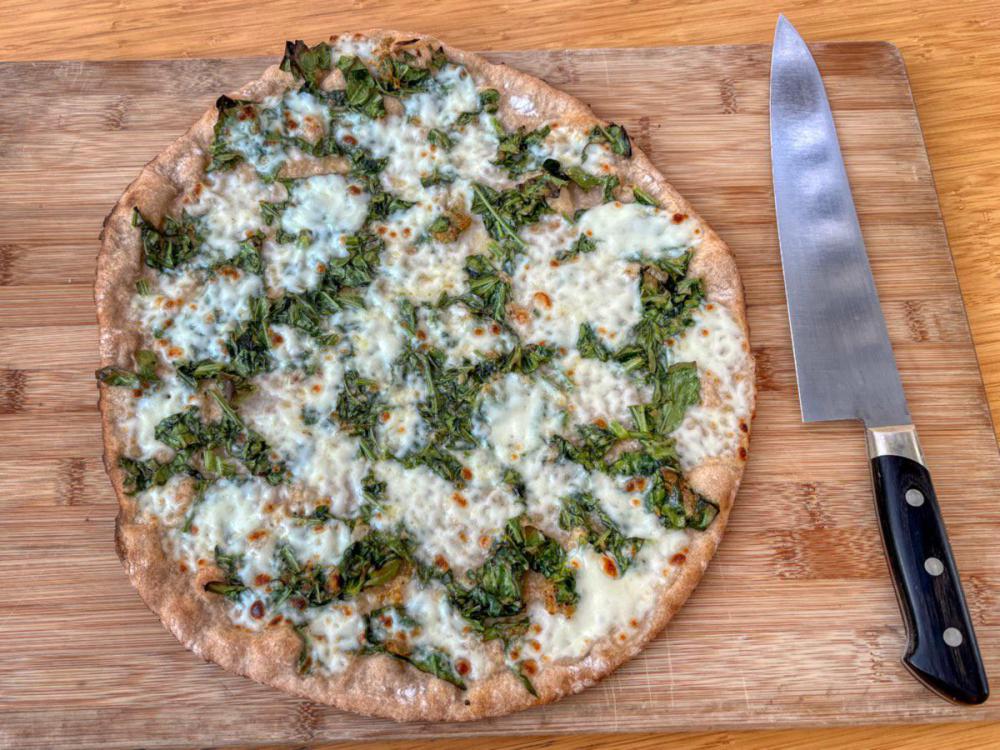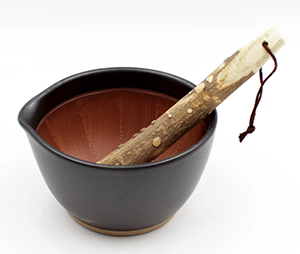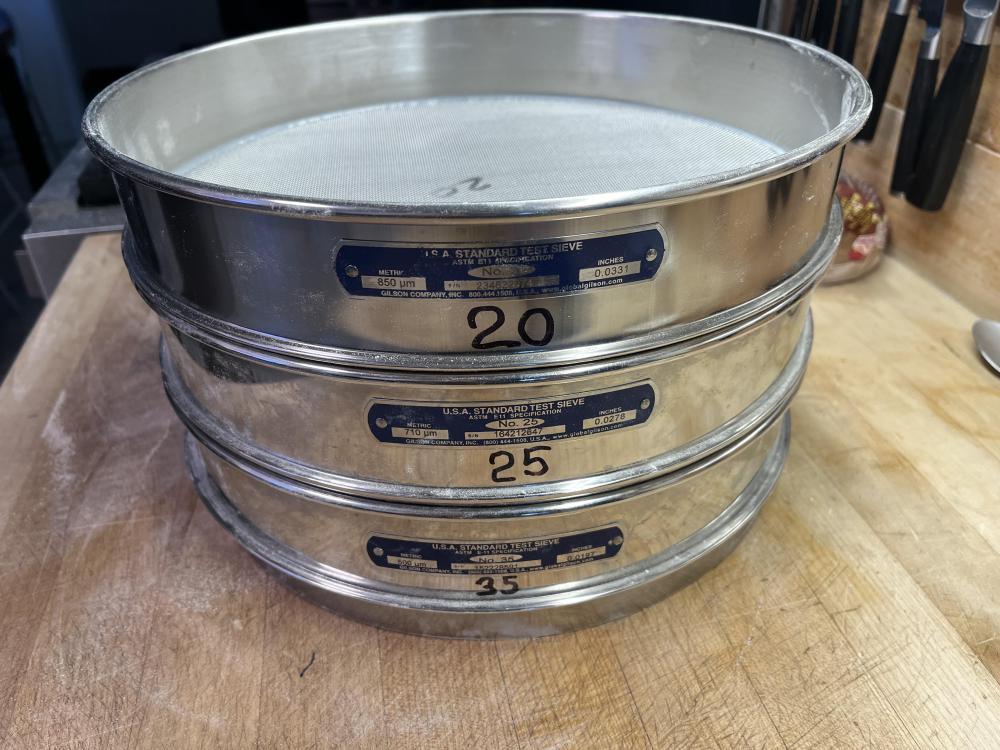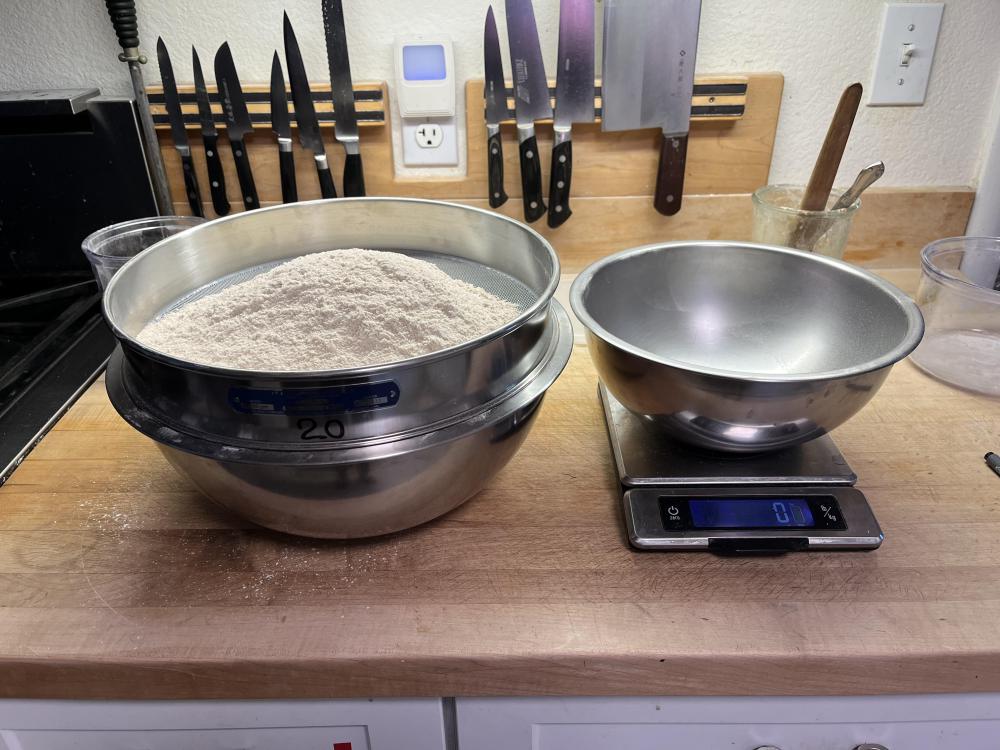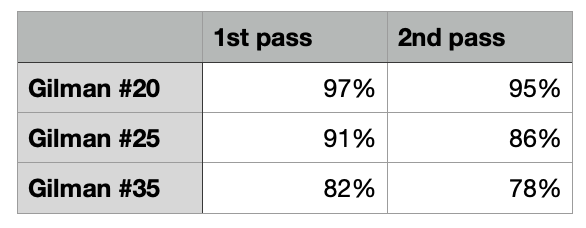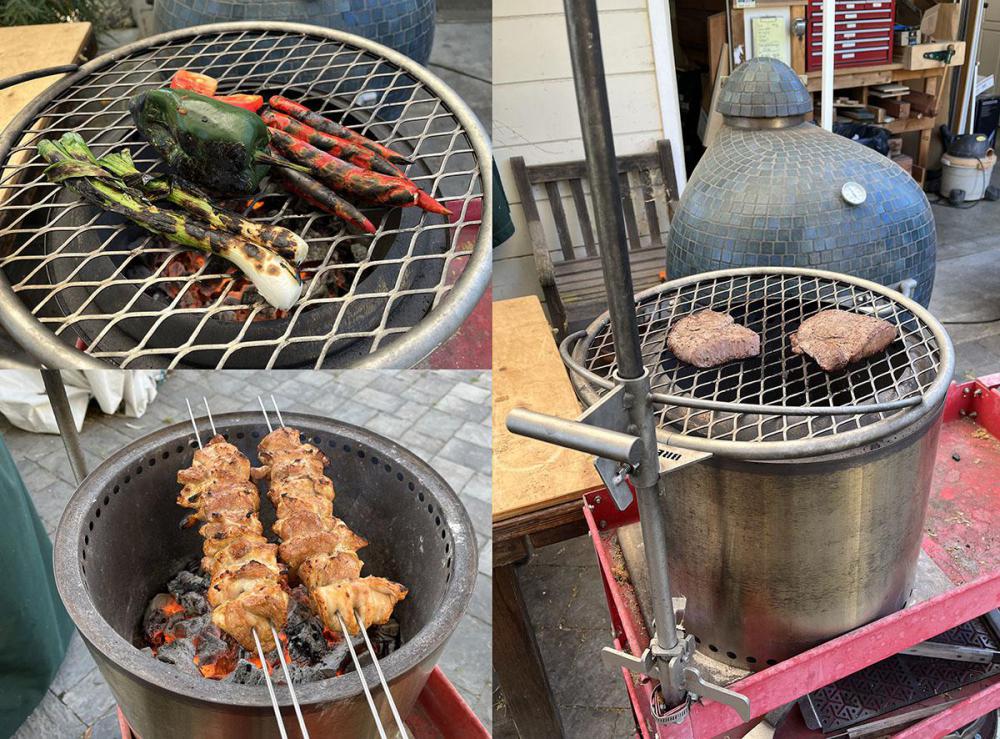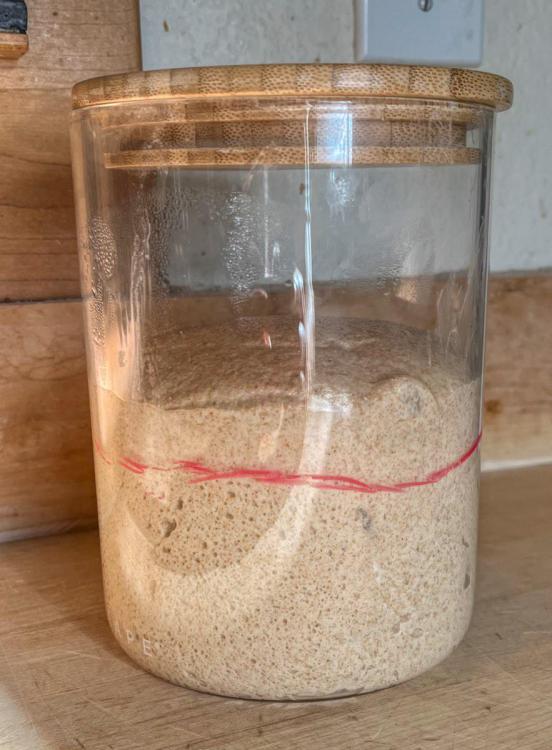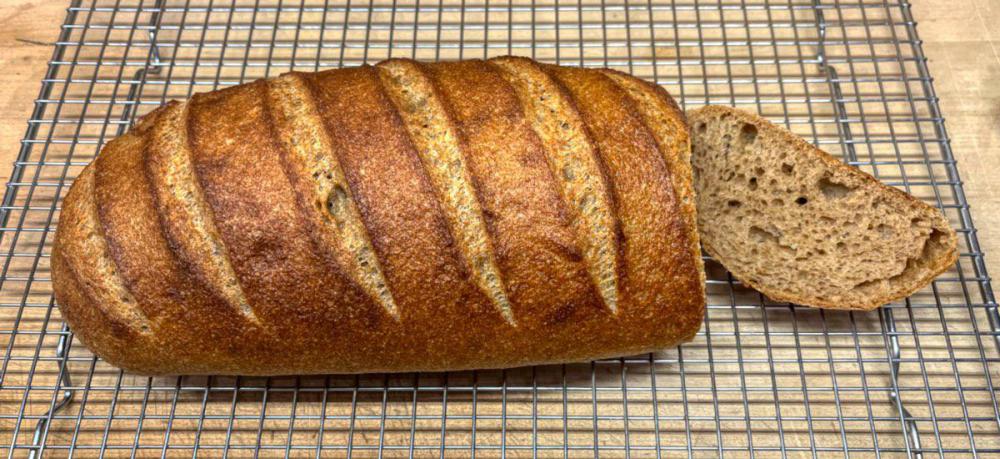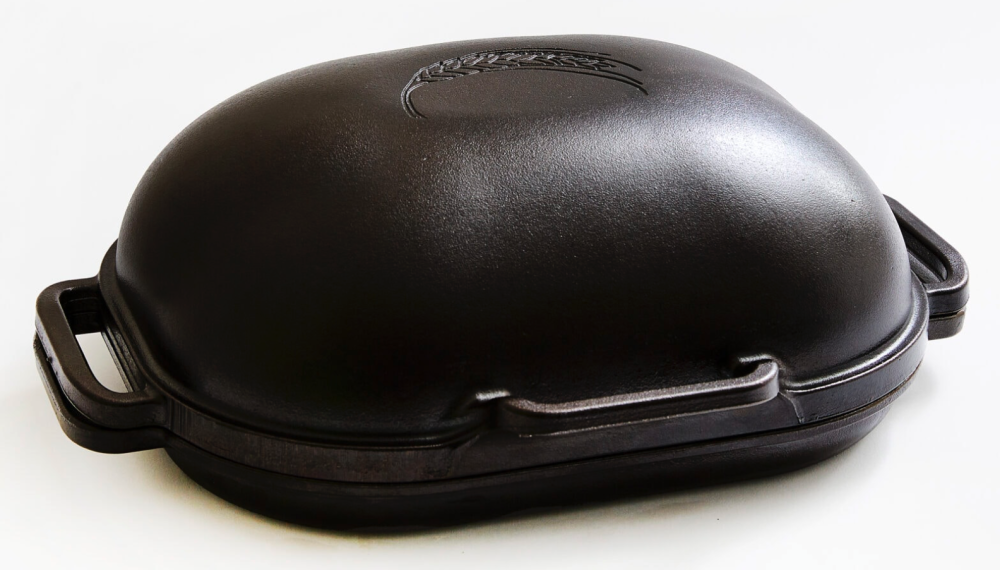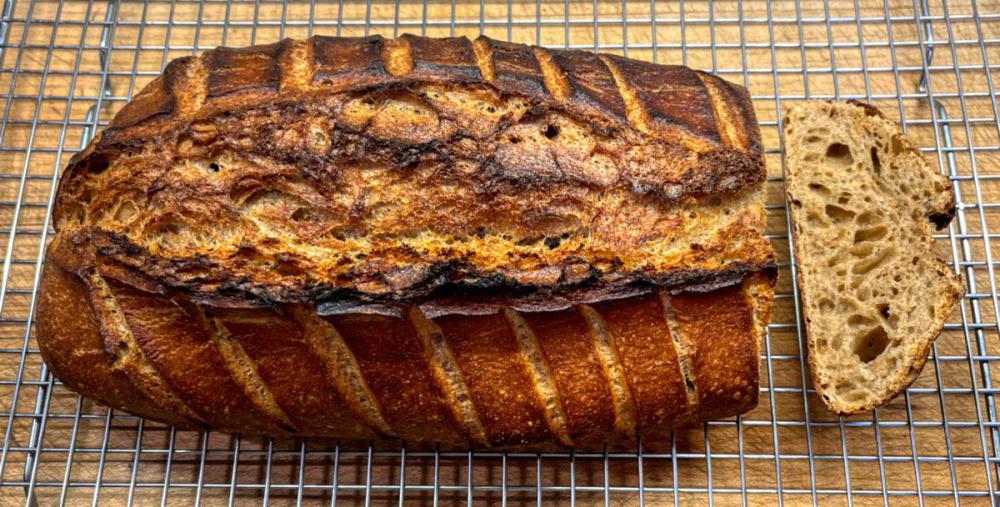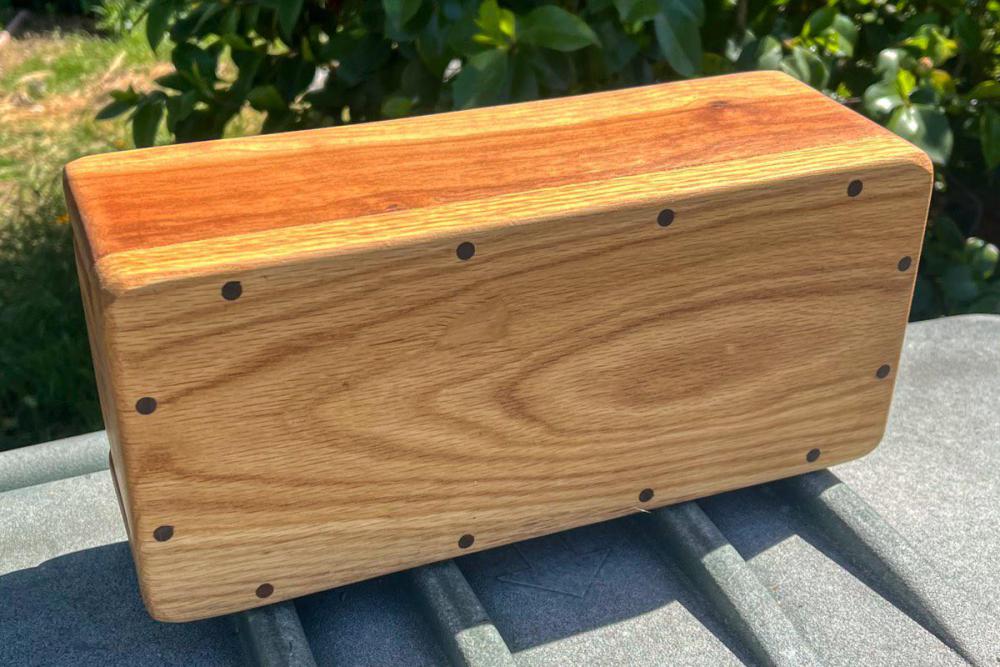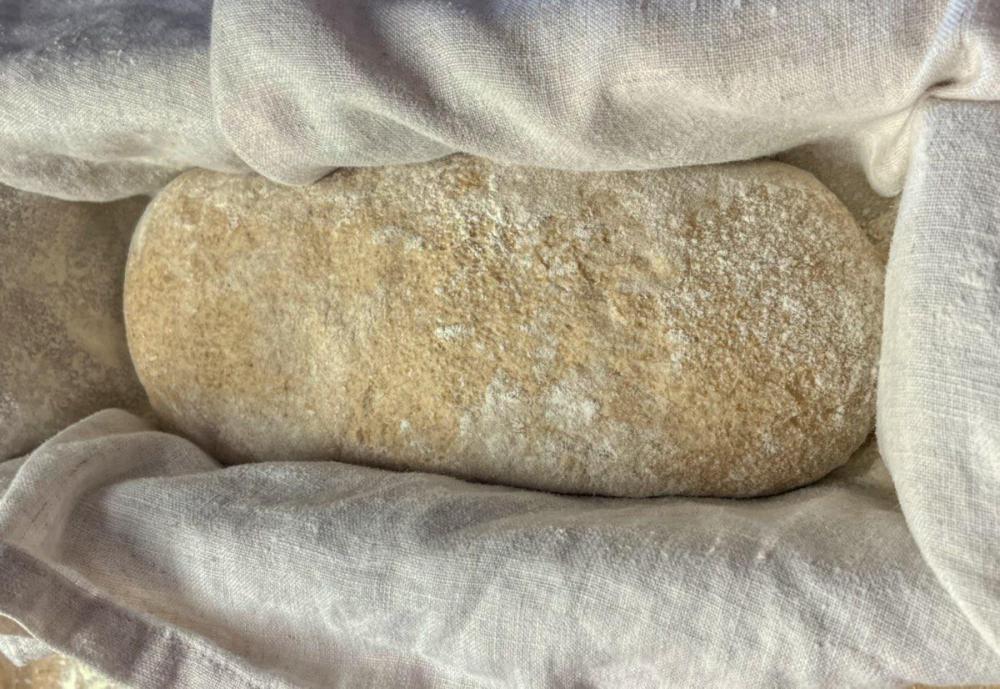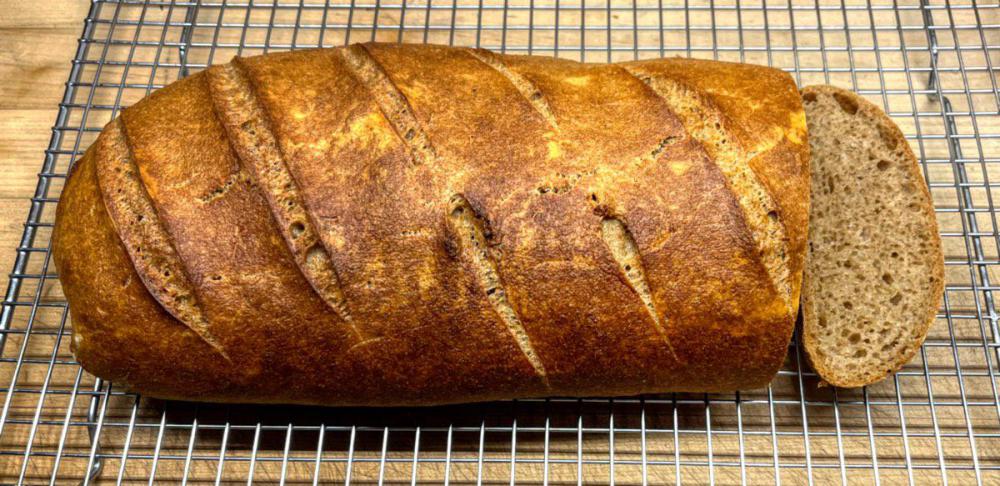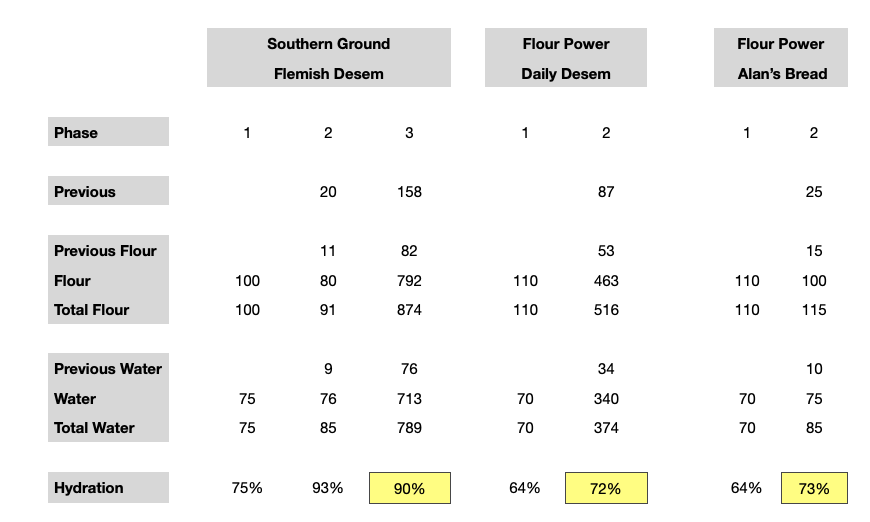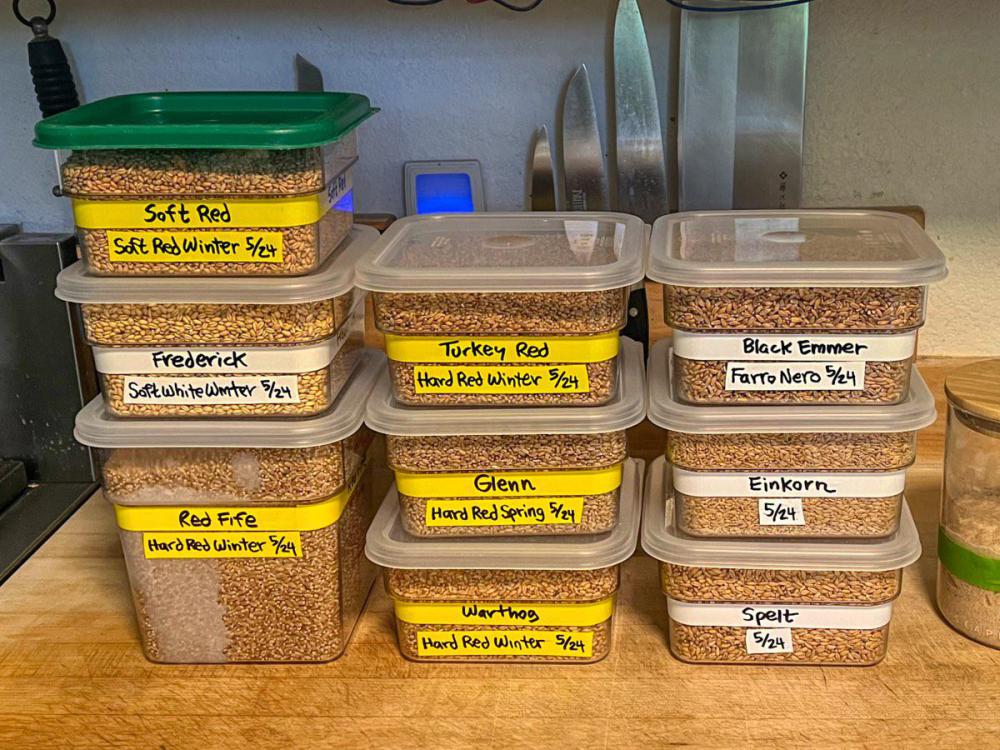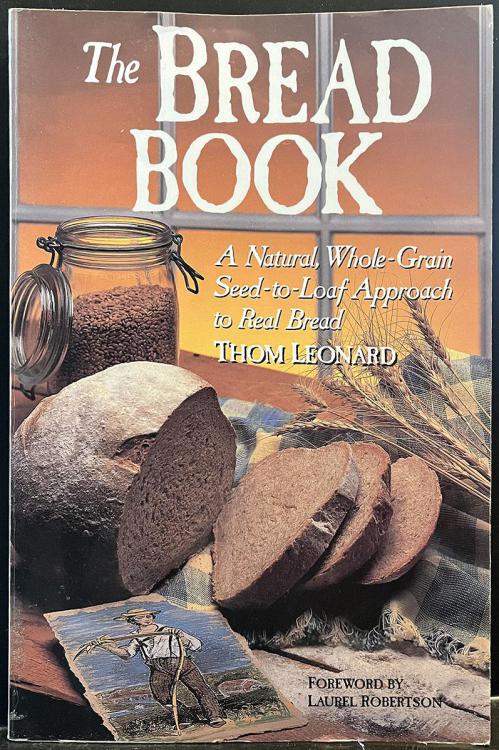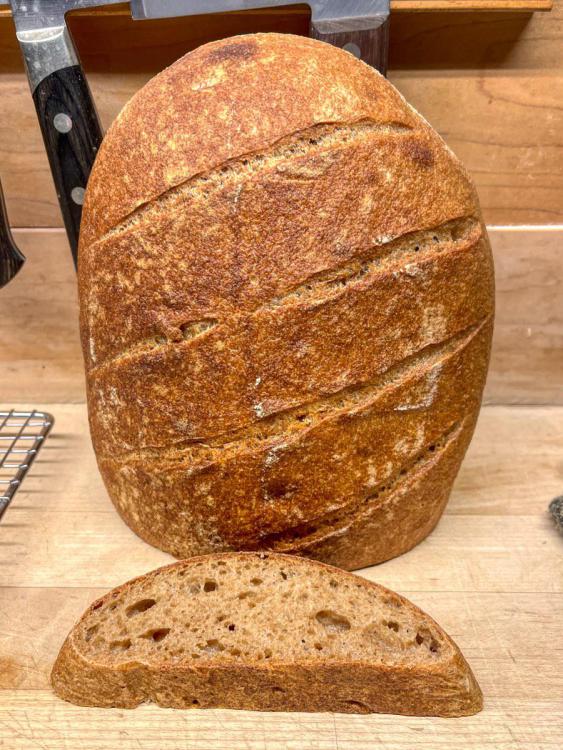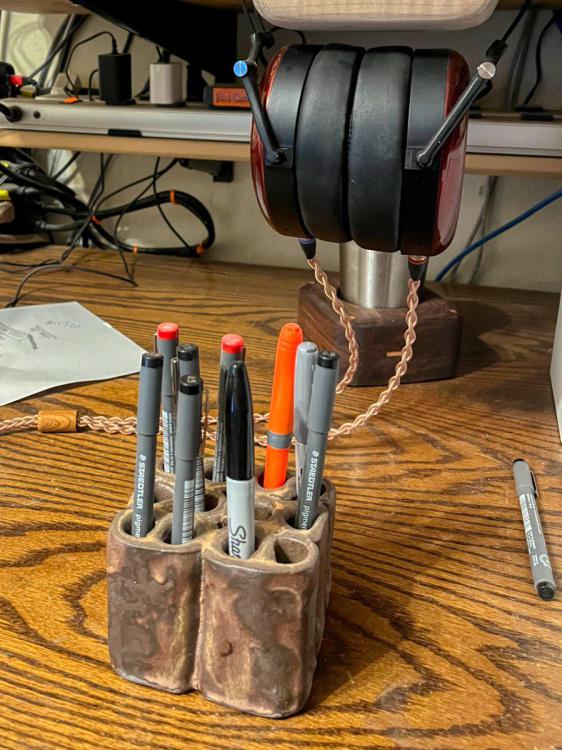-
Posts
1,739 -
Joined
-
Last visited
-
Days Won
53
Content Type
Profiles
Forums
Events
Everything posted by Syzygies
-
I asked my wife, who belongs to a Greek Orthodox church. Her immediate answer: They overcook it. My advice would be heretical: Sous vide for a long time at a rather rare target temperature, then grill on the KK to get a nice exterior. That's my go-to for any meat better served rare than "low and slow" trad BBQ.
- 1 reply
-
- 1
-

-
At the moment the two most recent threads are spam, 5 and 10 hours old, by different posters. There are dozens of people here I would trust with the authority to delete threads, under a "one strike" rule: If any deletion is even remotely a judgment call, as determined by our actual admins, that authority is permanently revoked. None of these spam threads would last 30 minutes, under such a system. I'm going to take a break from posting until we sort this out.
-
May I ask, what is the rack? I want one!
-
I ordered the Fourneau mat, which fits on my mini pizza peel, and doesn't need handles. I do own scissors, but do the BreadMat-C handles get in the way of closing the Challenger? Once I toss in three ice cubes, I feel like I'm on a tight clock. Steam does make its way between the Challenger pieces and the knitting of the Challenger gloves. I've never been burned, but I don't feel like waiting around! As in, any extra step that takes another half second would be dumb. They do say two ice cubes, but they don't specify a size. Huh. Their handles are to overcome the difficulties in lowering an unbaked loaf into a tall-sided Dutch oven. A solid border prevents deforming the loaf. However, the Challenger doesn't have tall sides, and readily accepts my mini pizza peel. Do the handles stay up, so they're never in the way when one replaces the Challenger lid?
-
FOURNEAU 2.0 SILICONE BAKING MAT Yes, that mat is approximately 11.25" x 6.75", and the Challenger interior dimensions are 11.5" x 9". So that would work!
-
Katakuchi Suribachi & Surikogi Set Last night's KK cook was a pair of white arrugula pizzas. Arrugula from our garden, that wasn't going to wait. We like a crisp, almost cracker crust from whole grain, as one approach to pizza. Last night I made a small change to my technique, that I quite liked: Dress the arrugula with the olive oil topping, and spread onto a dry pizza. This was easier than tugging oil across the crust itself (yes, not that challenging, but this was noticeably easier). It seems the crust had more chance to breathe as it baked. I briefly microwaved a few cloves of garlic, and mashed this in my favorite suribachi (I have all three sizes but I regularly gift the middle one as most used) with olive oil, preserved lemon, black pepper and maras pepper. If one leaves out preserved lemon, add salt.
-
Stainless Steel Pizza Peel With Collapsible Rosewood Handle Relays could work, but they call it The Challenger for a reason! Their suggested directions are to preheat at 500 F, put in the loaf with a few ice cubes, reduce the heat to 425 F and bake 20 minutes covered, then 12 minutes uncovered. I flip the lid and put the base on the lid. I find that these directions work well for a range of breads. Sometimes I rotate halfway through the 12 minutes uncovered. Sometimes I go 15 minutes. Sometimes I flip the loaf bottom side up for the last few minutes. I've been working with 80% hydration, 95% extraction doughs from freshly ground grain. This poses challenges; I generally bake cold from an extended fridge ferment. My loaves would stick without parchment paper underneath; I use the above mini pizza peel to move them without damage. I've tried removing the parchment paper at the 20 minute uncovering mark, and the loaves still aren't completely set. I now just let the parchment paper ride, perhaps up to the final flip. In practice, one can't adjust KK temperatures this rapidly, and one often doesn't want to run an indoor oven longer than necessary. I find that once The Challenger itself reads 425 F using an infrared shooter, we're good to go. With the KK, I'll arc high and ease down to target temperature. So you could run a relay pipeline, if you have a stone or steel that fits next to The Challenger, while maintaining a constant baking temperature.
-
I now have three Gilson test sieves, purchased over the last decade. The #20 arrived yesterday, so I made some careful extraction estimates. We have an older Wolfgang Mock Grain Mill, that most closely resembles (and takes the same replacement stones as) the KoMo Fidibus 21. A comprehensive US source is Grain Mill, Flour Mill, Grinder | Stone Burr, Impact & Steel Burr Mills at Pleasant Hill Grain. They also recommend the Royal Lee Household Mill if one's exclusive goal is the finest possible flour. I would contact them for buying advice; the newer Mockmill 100 & 200 probably represent the best value and performance, if one is not put off by their appearance. I adjusted my mill to grind as finely as possible without gnashing stones, then tested one and two passes of 500g hard red winter wheat from Central Milling, with each of my sieves. The extraction percentages are shown in the above chart. One can buy Gilson sieves from sources such as Amazon, or directly from Gilson. It's worth consulting Gilson first, to understand options. ASTM Test Sieves | USA Standard Test Sieve - Gilson Co. What is a Sieve? Make Sure You Choose the Right One - Gilson Co. 12" Sieve, All Stainless, Intermediate Height, No.20 - Gilson Co. 12" Sieve, All Stainless, Intermediate Height, No.25 - Gilson Co. 12" Sieve, All Stainless, Intermediate Height, No.35 - Gilson Co. These sieves are expensive but remarkably well-made. They fit perfectly into a Vollrath 69080 8-quart heavy-duty stainless steel mixing bowl, universally available from restaurant supply stores and Amazon. These bowls are the best quality I know; we have multiples of many sizes. I have a friend who cheaps out whenever he thinks it doesn't matter to free up an extra $40 for one night's wine, and his wife is still gnashing her teeth that he didn't get Vollrath bowls. The quality difference is striking.
-

I think the branding is all wrong on these...
Syzygies replied to Mr. Natural's topic in Forum Members
As my off-brand POSK disintegrated, my wife bought me our 23KK. I didn't put up much of a fight. She was tickled to talk with Dennis; people should consider putting uncertain spouses on the phone with him. I wish I had his charm. I wouldn't go bigger, doing it over again myself. I've fed 80 people out of my 23KK. Two zones? My KK is my oven, used most often for bread, pizza, Focaccia di Recco, roast or tandoor chicken, and monumental smoked meats. My Solo Stove Ranger is my grill. Sometimes I'll be smoking pork for carnitas in the 23KK, at the same time that I'm grilling vegetables for salsa on the Solo Stove. I have a Weber kettle we haven't touched in years. Kettles are a fundamental design, brilliant for their day, but one can now do much better. I now associated kettles with the taste of burned chicken fat, guests in someone else's yard. Worst case they make me do the grilling on a mismanaged fire, like a pitcher left out to take one for the team. I can set a fire in my Solo Stove in a couple of minutes: wood chunks, lump charcoal partway up, a splash of 99% isopropyl alcohol, throw in a match, then come back in 30 or 40 minutes to a perfect fire. The vertical, smokeless column of hot air combines all the hype of air fryers with traditional grilling over fire. I get much more uniform cooks than I've even seen anyone get with close-to-the-fire grilling, and better flavor. Mine is a Frankenstein rig (a Breeo Outpost adjustable grill grafted onto a Harbor Freight service cart) but Solo Stove has caught on to cooking on their fire pits, and offers some interesting options if one spelunks their site. They recommend wood as a fuel, concerned that a full load of charcoal could get too hot, but one never needs a full load. I layer wood then charcoal, as wood lights faster but charcoal lasts longer. There's a long KK Solo Stove thread. It starts out slow as we experiment, but has more information. -

Brød & Taylor Sourdough Home
Syzygies replied to Syzygies's topic in Bread, Pizza, Pastries or Desserts
Wow. I had thought of pitching all the bran into the levain to digest, as a way to stay 100% extraction, but I hadn't tried it yet. Bran slices gluten, and you're moderating this. Yes there are many factors influencing starter flavor. Temperature, hydration, timing, how much to carry over. Desem is a famous corner of this design space. I’ve been favoring lively starter at the expense of other characteristics, but I’ll get more confident. By expanding the behaviors we can offer, the real purpose of the Sourdough Home is to engage us in a relationship with our starter. As one wonders after tasting bread how baking technique and the recipe might influence its flavor, one wonders after smelling starter how handling technique and the recipe might influence its aroma. These involvements are twin aspects of naturally leavened bread making, on an equal footing. I sometimes think that these involvements are a scientific process for reaching an objective result. I sometimes think that these involvements themselves are instead the whole point, and imprint on the result exactly like other art forms. Paintings can reify thought, transferring part of the painter's inner world to a degree that can shake one's soul. Science can't explain this transference. People talk of a "passionate" cook? When one travels, why is eating the food so important to understanding the culture? When food is magical, it achieves this same kind of transference. -

Brød & Taylor Sourdough Home
Syzygies replied to Syzygies's topic in Bread, Pizza, Pastries or Desserts
I've logged 221 loaves of bread since 2011. After a long initial struggle trying to understand why freshly ground "green" flour didn't work, I settled on a sourdough recipe that was roughly half freshly ground hard red and rye flours, and half bread flour. I used some yeast to boost the sourdough, and worked through at room temperature on the bread's schedule, overruling mine. Every time I tried to work out a new recipe with these basic assumptions, I ended up back with the same recipe. This is true of so many things: Considering how hard I've worked at this, you'd think I'd be better. One's first reaction to the Sourdough Home could be that it's a convenience for feeding starter less often, without inducing a fridge coma. A more nuanced read is that fermenting bread can be every bit as subtle as fermenting wine, and the Sourdough Home is a tool that increases one's options. Mine provoked me to relearn bread with new ground rules: all freshly ground flour, nearly full extraction naturally leavened with no yeast cool phases to extend the fermentation time and allow more flexible scheduling My original inspiration was Desem bread, but I've evolved into a new equilibrium recipe. Above is my eighth try, and I'm starting to get the hang of it. We love the taste. My loaves are far from Instagram-craggy, and far from anything we can buy in the SF Bay area. My new several day protocol is this: prepare a levain from flour, water, starter hydrolyze the remaining flour with a few conditioners I expose the second mixture to a minute in a chamber vacuum machine, which accelerates the hydrolyzing process exactly as others use vacuums to marinate meats. Let both mixtures rest till the levain is ready. It's convenient preparing both mixtures at once, and the long hydrolyze gives the conditioners time to act. Combine these mixtures with a salt water solution Stretch and fold in a bowl, frequently for the first few hours Transfer to the Airscape glass canister, mark the level with a grease pencil, and place in 50 F Sourdough Home Wait another interval, typically overnight Pull out the dough, let return to room temperature and rise 20% above grease pencil line, typically 3-4 hours Bench rest, shape, place loaf in proofing basket or box Wait 2 1/2 hours, frustrated that the usual signals for overproofing don't seem to apply. Move the loaf to the fridge. Wait another interval, then get either the KK or an indoor range up to temperature. Bake cold from the fridge, typically in a Challenger Bread Pan. Baking cold from the fridge is a convenience that supports more flexible fire management, and it stiffens the dough so it won't sploof out so much. The additive I've settled upon are 2% vital wheat gluten 0.5% diastatic malt 60 ppm ascorbic acid For me these make a dramatic difference. Everyone's results vary. If you buy flour, even freshly milled full extraction, different ballgame. This is not Desem, but it's healthy. -
Yes. I owned and gave away the Lodge Double Dutch Oven, recommended by various books and predating the Challenger, because it only made boules. I considered and rejected the Fourneau Bread Oven for exactly the downsides they note. The Challenger just works, and it bakes bâtards. I used to always bake a pair of loaves and give one away, which favored my aluminum disk in a cake pan for steam. I now bake one bâtard at a time, which favors the Challenger. The KK appears to handle my steam method just fine, but when we spent more than my first two cars on an Italian range for our kitchen, we blinked. We'll still use my steam method for free form baking in the KK, but like @Pequod the Challenger has become my default both inside and in the KK.
-
The Challenger Bread Pan is an effective alternative to filling an entire oven with steam. They're the same idea as the Dutch oven approach, except one gets to bake a bâtard, which some of us prefer to a boule. They recommend a couple of ice cubes. In a KK, the bread then doesn't see fire till one removes the Challenger lid. That's ok; for us the main advantage of the KK is avoiding heat in the house in the summer.
-
Actually, what I realized was that aluminum has nearly twice the specific heat capacity as steel, so I replaced my steel chains with an aluminum disk. Thomas Keller is the earliest reference I know to using rocks, which I consider a clumsier approach than an aluminum disk. There are two pervasive problems with web debates, both raised by The Perfect Loaf. First, they need content, so they'll write something. Second, many people will assert that they're happy with an intermediate solution, and all they're saying is that they're happy. Partly because they're unaware of better solutions, and haven't tried them. The Perfect Loaf certainly doesn't compute the physics. That is a time-honored approach: Try something and see if you're happy with the results. Of course, many people claim to be happy spritzing 5 grams of water from a plant spritzer. That's a placebo effect. What I computed was the weight of aluminum needed to create enough steam to replace the volume of a KK or a conventional oven a couple times over. This is what commercial bread ovens do, because they can. What I don't understand is the marginal utility over generating just enough steam to partly fill an oven once. That certainly helps over doing nothing. It's amazing how in a weak bleach solution, bleach finds its target. I don't believe that a weak steam mixture behaves the same way, but my chemistry days are long ago.
-
Cairnspring Mills Production Requirements and Guidelines for Grain Growers Trailblazer is not "organic", though that's a tricky label that doesn't substitute for understanding products. For example, in the milk market there are major players that sport an organic label while working as hard as they can behind the scenes to weaken what this means. There are well-known chicken brands with "natural" and "organic" variants where the organic chickens eat primarily soy, and don't taste as good as their natural counterparts. In general, for a small business one might encounter at a farmers market, the hurdles for the label are very different from the hurdles for following best practices. I'm reminded of wines in Italy that tire of qualifying for a DOC label, and sell spectacular work as table wine. I'm mildly concerned that RoundUp is used to harvest wheat. As usual, the European Union has moved to ban this practice. Elsewhere, this practice is easily avoided in one's own baking, e.g. by buying from sources like Cairnspring Mills. There are some well-known sources we've all used that don't make a pledge to avoid RoundUp in their flour. Huh.
-
Cairnspring Mills This quote intrigued me enough to queue up Cairnspring Mills for a try...
-
Another book I got into last night is Bread Book by Chad Robertson (of Tartine Bakery). No mention of Desem, but very deep discussions of how understand the effects of various controls on levain, salt... There are way too many books attempting to make bread "easy"; he's established enough to just say all his thoughts without concern as to whether we can keep up. They're Michel Suas level, but while Advanced Bread and Pastry by Suas is professional training and needs to fairly represent the consensus, Robertson is free to have an opinionated artistic vision. One example takeaway: Of course many of us are comfortable and successful maintaining a sourdough starter, and that assertion says more about our positive outlook on life than whether there's room to improve. I'm getting that someone handed me a recorder and I'm using it as a drumstick, while the Chad Robertsons of the world are playing standup bass. They're smelling and/or tasting their starter at every juncture, and rather than blindly imposing a schedule on their starter, they're tweaking hydration, temperature, and seed ratio (how much starter to carry over) so the starter ripeness peaks on their desired feeding schedule. Imagine instead we were ripening goat cheese, and dropping chunks into milk for the next generation. Overripe cheese will nevertheless inoculate the milk, and one can hope to catch the process sooner next time. But we're creating evolutionary pressure that favors flavors we don't want. This is the difference between dog breeding and leaving one's dogs intact. You get dogs either way, but...
-
I have another book I overlooked: The Bread Builders: Hearth Loaves and Masonry Ovens by Alan Scott and Daniel Wing. Alan Scott was Laurel Robertson's friend and mentor to Jennifer Lapidus (Southern Ground). Desem bread is featured, and technical discussions rival those by Suas in Advanced Bread and Pastry (whose commercial orientation skips Desem). Of these, I want to work through every recipe I can from Southern Ground. Shown is North Carolina Sourdough, to try the '85' flour from her mill. Technically this was a pitch that turned into a passed ball, for so many reasons, but it tastes so good that we want to make it again right away, to see if we can figure it out. My new aspiration is to figure out Richard Bertinet's slap and fold technique for kneading bread. I need more gluten structure with less effort. It's harder than it looks, which is evident in the videos where someone else picks up the same dough, and can't skit across it like a waterbug.
-
I just searched for Desem in recipes indexed by Eat Your Books. The three books that come up are Flower Power, The Laurel's Kitchen Bread Book, and Southern Ground. This of course misses out-of-print books like The Bread Book by Thom Leonard, but at least we haven't missed anything obvious.
-
For today's Desem bread I made a proofing cradle from wood. I'm at the limit where my dough will sploof out into flat bread. A classic proofing basket is already wider than the wood frames I've been using for years. My frames had no bottom, but now I want to finish proofing in the fridge. For flavor, and as a bonus so the loaf better holds its shape. So now I needed a bottom. There are gaps by the four corners (which is fine for a proofing basket) so that wood expansion doesn't crack the box. Wood responds to changes in humidity by expanding across the grain. The poster child here is a beginner woodworker who makes cutting boards for gifts, and mixes end and side grains. Their boards crack. If one studies drawer construction, the bottoms float to avoid this issue. I prefer a chunkier solid proofing cradle, for thermal mass. You'd think my design would be everywhere, but I've never seen it before. In the same spirit as my artistic tirade above, this box uses my favorite cheater joinery. One shouldn't glue end grain without further support. People who understand wood believe that a hand cut dovetail joint displays the pinnacle of craftsmanship, even though box joints are stronger. People who make box joints tend to use jigs, then they look like every commercial box you've ever seen. What I do is plan and dry assemble my joinery using cabinet screws, then glue using the screws for clamping. Once the glue dries, I remove (and reuse) the cabinet screws, and replace them with Miller dowels. I then sand further and finish with Tried & True Original Wood Finish polymerized linseed oil and beeswax, which is food safe. My box is shown sunning in our yard, so the bread won't taste like linseed oil. This is dead simple joinery that I'd recommend to any casual woodworker. My friends who don't judge art by difficulty, or who are simply oblivious to measuring difficulty for wood joinery, love this style of construction.
-
I added her Daily Desem, which is about the same hydration. Yes, she calls for "full" extraction white and/or red whole wheat flours in the two recipes. Perhaps some people actually use 100% extraction flour? I put mine through a coarse sieve, ending up with 95% extraction, which can (nearly) handle 90% hydration. I'm going to drop a few percent at a time to see what happens.
-
My impression is that as a rule, Desem bread uses high hydrations. I was startled, reading Flour Power, how little water she uses. My earlier sources use clumsy Imperial volume measurements, making comparisons less precise, but I believe that Southern Ground is closer to usual practice?
-
Alas I noticed. We'll meet there, if not sooner. Oddly, Tara Jensen's web site makes no mention that I can discern as to the location of her upcoming workshop?
-
Ha! My wife Laurie is my muse, saw where I was going with the Brød & Taylor Sourdough Home, and recalled reading the Desem section in The Laurel's Kitchen Bread Book, back in the 1980's when it came out. I sensed a seminal work, akin to Richard Olney's Simple French Food spawning the Chez Panisse diaspora. Sure enough, Jennifer Lapidus read that same passage back in the day, and tracked down Laurel Robertson's dear friend Alan Scott, who became her mentor. She bought his 5,000 pound, 48-inch stone mill when he died before receiving it, and used it to found Carolina Ground. Her book Southern Ground is my new bible; as @Pequod discovered it's basically about Desem bread. I'm working through the Kindle edition until her signed copy arrives. Tracing back her sources, I found a used copy of The Bread Book by Thom Leonard. It's yet another take on Desem bread, worth reading. I've learned a few things I hadn't put together, such as slack bread could be overly digested by the sourdough starter. Meanwhile, my grain order from Janie's Mill arrived, to supplement our stocks of hard red spring wheat from Central Milling, and soft wheat and rye from Giusto's. Let the games begin!
-
In defense of "no pics", my last two loaves of sourdough have radicalized me. They looked like I'd been set back five years, and they tasted the best I've ever made. Now I'm on a Desem bread bender. For a period I joined a pottery studio nearby. One open house evening, I bought five "lottery" tickets when it looked like no one would, just to support the place. Eventually, many tickets sold. Yet, somehow, all five of my tickets won. I got kidded about this for months. One of my prizes was a bowl the owner had made but couldn't sell. My neighbor is now very happy to have it. The bowl extended for an inconceivable distance. It displayed a mastery of technique, the impossibility of which would only be clear to someone who had spent years trying to master the potter's wheel. I have a strong aesthetic bias, that in fact it's easier to display exceptional technique than true originality. This is certainly true in math. Every artistic endeavor gets distorted by this, to the point where we teach ourselves to judge the difficulty of something, rather than its artistic merits. My favorite piece that I made at that pottery studio was a pen holder. In India, before styrofoam cups, disposable cups were made of clay, and after use they contributed to the road. I tried to imagine what a pen holder would look like, made a few seconds each in the millions, if that India instead needed pen holders. Needless to say, this work was divisive. At least no one could accuse me of flaunting my skills with clay. This applies to food, which can be tricky to assess by appearance alone.



